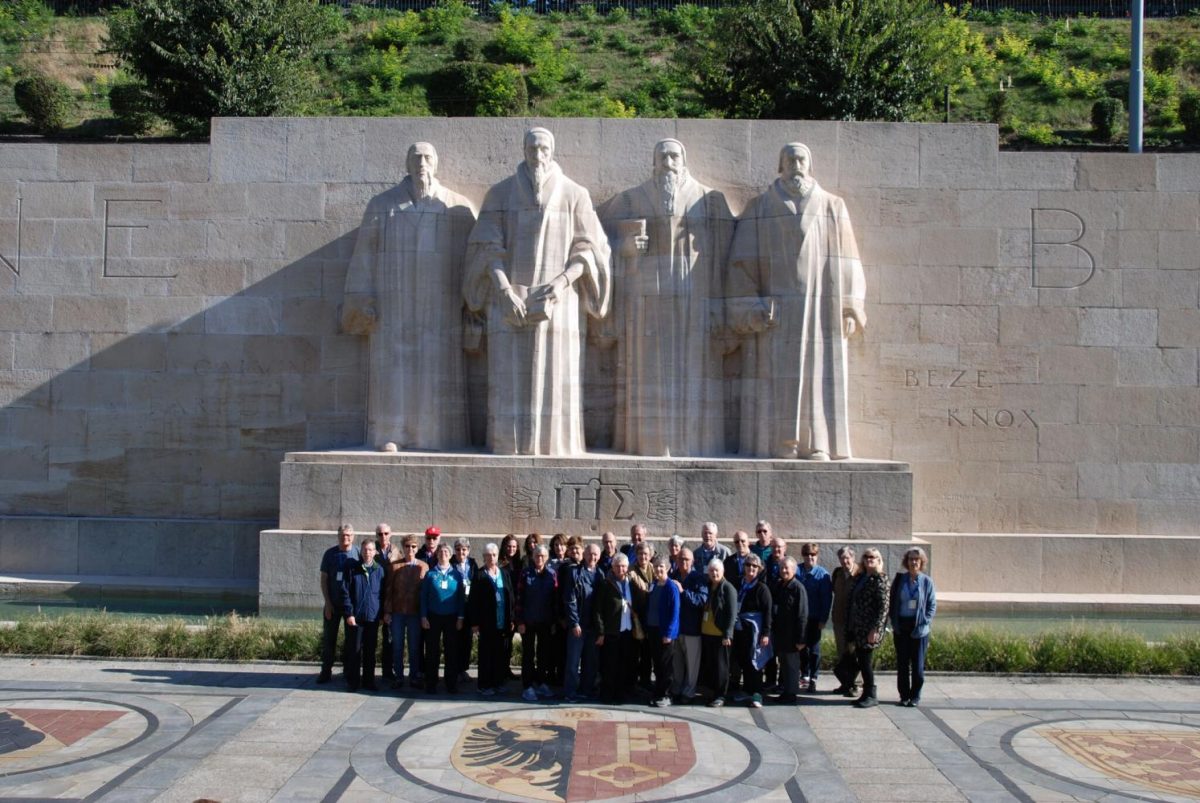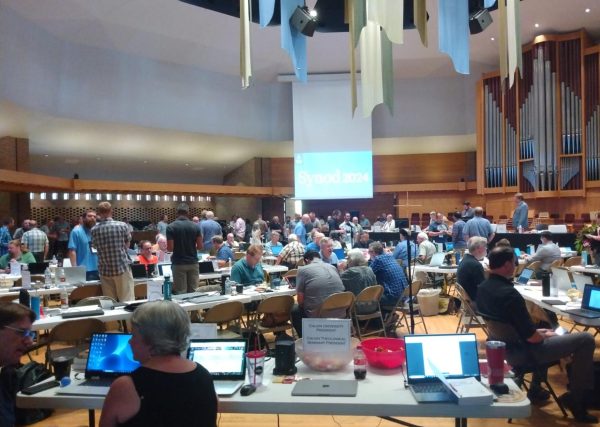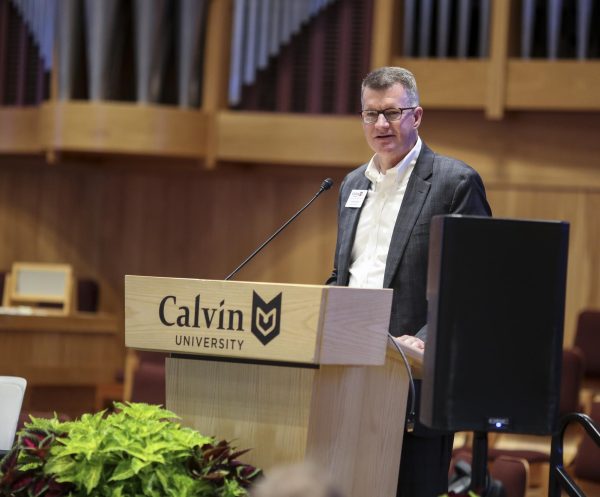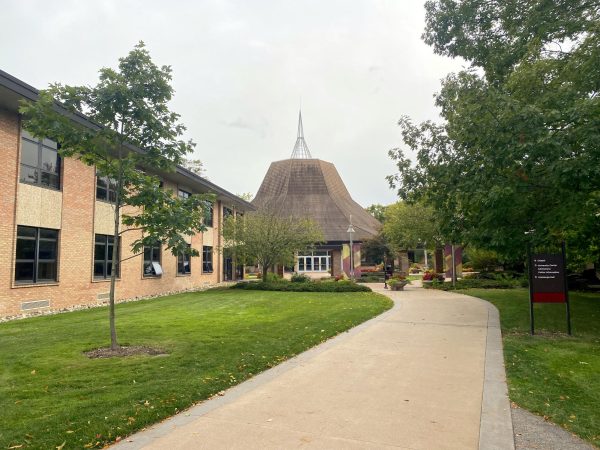Trip explores Reformation “places of memory”
Director Karin Maag and curator Paul Fields regularly explore the lives of the Reformers at the H. Henry Meeter Center for Calvin Studies. While leading a group of 32 travelers in late September, they explored the places where, five centuries ago, these men lived and preached their revolutionary ideas.
Open to Calvin alumni and Calvin Academy for Lifelong Learning (CALL) students, as well as members of the wider community, the trip retraced the footsteps of the Reformers through France, Germany and Switzerland. According to Maag, many group members experienced a deep spiritual connection to these places–a sense of pilgrimage often strange or uncomfortable for many Protestants.
“For Protestants, [the Reformers are] not saints. Nobody goes and prays to Luther or Calvin or Zwingli, but they have this sort of special status,” Maag said. “[Much of our group] felt a connection to these places in terms of the way they understood their faith. And that was really quite powerful.”
By visiting Bern, Strasbourg, Zurich and many other locations, the group placed the Reformers’ teachings within their original contexts. Many Reformers served as civic as well as theological leaders, and the cities still bear reminders of 500 years ago.
“You get a sense of the liveliness of the environment and the ways in which ideas do not float tidily on little clouds,” Maag said. “They are borne out of little interactions that take place within a very busy context.”
In Wittenberg (where Martin Luther famously nailed his 95 theses on the church door), the travelers experienced a 360 degree version of the town in the 16th century, complete with cows, pigs and chickens. In Erfurt (where Luther went to university), they climbed a long staircase to the town’s twin churches, a side-by-side parish church and cathedral. And in Kappel (where Huldrych Zwingli died in 1531), the group met with cows once again.
“That was just a beautiful evening of seeing the Alps and listening to cowbells. I think that’s what struck everyone: they actually have bells on their cows!” said Fields.
But reflective moments like these did not dominate the Reformers’ lives, as the group understood more and more throughout their travels. Though the thinkers agreed that the church needed change, they sharply disagreed on the nature of that change, remaining – in Fields’ words – “sort of on the same page, yet [with] lots of different little nuances.”
Each new city localized and contextualized the ideas in its own way, and each place inherited its history in its own way. Though Maag had visited Germany previously, this trip served as her first opportunity to visit what was formerly East Germany. The Communist regime’s treatment of Reformation sites fascinated her:
“Did they flag them as being important, or did they downgrade them for being religious? It’s interesting to see the longer history…. They’re not frozen in time in the 16th century.”
These Reformation sites, however, did not serve as the trip’s only theme. In Gruyere, a town best known for its cheese, the group toured a chocolate factory because – as Maag said – “Honestly, if you’re in Switzerland and don’t tour a chocolate factory, that would be kind of sad.”
Since Johann Sebastian Bach lived and worked in many of the same cities as Martin Luther, the travelers also stopped at many Bach sites, including a museum in his hometown of Eisenach. There, the group enjoyed a performance of the composer’s pieces on a series of old instruments, including a double harpsichord.
Music, sung in its birthplaces, also connected the group back to the Reformers. In Luther’s church in Wittenberg, the group sang his` hymn “A Mighty Fortress is Our God,” and in Geneva, they sang from the Genevan Psalter, originally crafted under the supervision of John Calvin. Maag remembered these moments as among the experience’s “most powerful,” tying them back to the trip’s purpose:
“The French have a term – lieux de mémoire– places of memory. And I think that’s really the axis of what we were trying to do… to connect people to these places of memory and reflect together about the Reformation’s significance then and now.”








Carol Knoll • Jan 22, 2019 at 9:55 am
This was a wonderful experience with Karin and Paul’s leadership. The class time with Karin was very interesting.